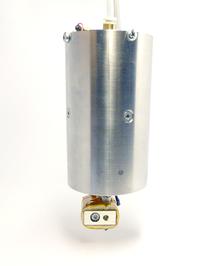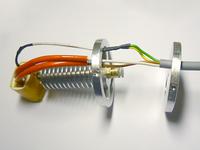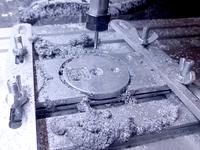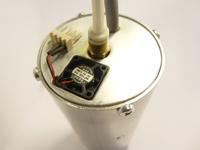Hotend to spindle mount

The CNC3020 original spindle has a diameter of 52 mm and mounts into a screw-tighened bracket. To be able to easily replace it with the 3d printer hotend, I made an adapter out of steel pipe of the same diameter.
The 52 mm external diameter is not a very common pipe size. Fortunately enough, it is apparently used in the exhaust pipes of some cars, and I was able to get a 50 cm length of it in stainless steel off eBay. Another common exhaust pipe size is 51 mm, but I do not think it would fit in the bracket correctly.
Construction

The all-metal hotend part was bought ready made from eBay. To make the assembly long enough for mounting in the CNC3020, a bit of extension was needed between the hotend proper and the top plate. A short length of PTFE tubing guides the filament across the gap. Another length of PTFE tubing is inside the heatsink, guiding the filament up to the nozzle itself, where it melts.


The aluminum mounting plates were cut on the CNC3020. They are attached to the steel tube with 4 tapped M3 holes on the sides. Countersunk screws are used for the lower plate, while the screws for the top plate sit on the mounting bracket, ensuring correct height when mounted.
Cooling

For 3D printer hotends, it is important to keep the melting zone of the plastic as short as possible. If the zone becomes too long, the plastic will stick to the sides of the tube and offer too much resistance to be pushed out of the nozzle. To keep the filament cool until the nozzle, the hotend has a heatsink. To ensure enough airflow over the heatsink, I additionally mounted a tiny 15 mm fan on the top plate.
Results
The hotend as constructed works fine and is in no danger of getting damaged even when printing with high temperature filaments.
Initially there was a bit of trouble with jamming, which were due to gaps between the PTFE liner and the nozzle. It is important for everything to fit snuggly, so that no molten plastic can squeeze into gaps, which would cause undue resistance to the flow.
– Petteri Aimonen on 2.6.2015
